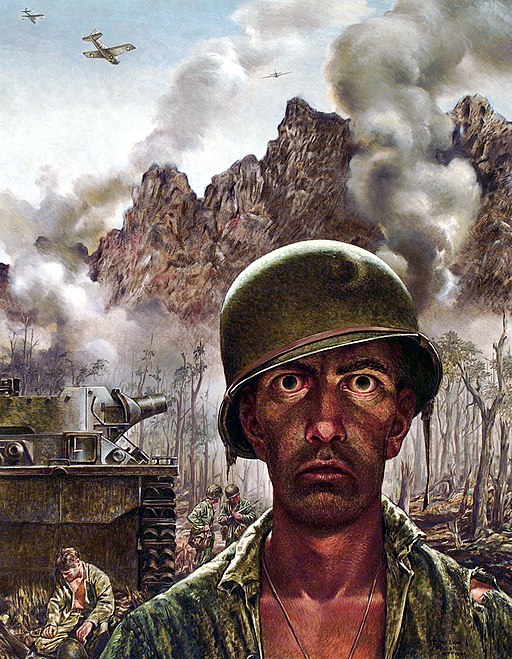
“Parson Weems’ Fable” by Grant Wood depicts the folktale of young George Washington and the cherry tree to remind the people of America about the integrity of the nation’s first President.
The composition shows Parson Weems, the fable’s author, pulling back the curtain as he points to a six-year-old Washington.
George Washington is shown holding a hatchet and confessing honestly to his father, Augustine Washington:
“I cannot tell a lie; I did it with my little hatchet.”
Wood has humorously used the adult head from Gilbert Stuart’s portrait of the first president for the young boy.
The African Americans in the background are picking cherries, another reminder of the nation’s history.
Parson Weems’ Fable
Mason Locke Weems (1759 – 1825), usually referred to as Parson Weems, was an American author who wrote the first accessible biography of George Washington immediately after his death.
He was the source of some of the apocryphal stories about Washington. The cherry tree tale is included in the fifth edition of The Life of Washington, the 1809 imprint; the original was published in 1800.
Weems’s biography of George Washington was a bestseller that depicted Washington’s virtues and was intended to provide a morally instructive tale for the youth of the young nation.
Grant Wood
Grant Wood (1891 – 1942) was an American painter best known for his paintings depicting the rural American Midwest. From 1922 to 1928, Wood made four trips to Europe, where he studied art.
He studied Impressionism and post-Impressionism; however, it was the work of Jan van Eyck that influenced him to take on the clarity of this technique.
From 1922 to 1935, Wood lived in Cedar Rapids, where he helped found the Stone City Art Colony to help artists get through the Great Depression.
He became a great proponent of regionalism in the arts. Wood taught painting at the University of Iowa’s School of Art from 1934 to 1941. The day before his 51st birthday, Wood died of pancreatic cancer.
Parson Weems’ Fable
- Title: Parson Weems’ Fable
- Artist: Grant Wood
- Year: 1939
- Medium: oil on canvas
- Dimensions Paintings, Collection Highlights
- Museum: Amon Carter Museum of American Art
Grant Wood
- Name: Grant DeVolson Wood
- Born: 1891 – Anamosa, Iowa
- Died: 1942 (aged 50) – Iowa City, Iowa
- Nationality: American
- Movement: Regionalism
- Notable works:
- American Gothic
- The Midnight Ride of Paul Revere
- Daughters of Revolution
- Self-Portrait
- Sentimental Ballad
- Parson Weems’ Fable
Parson Weems’ Fable
Grant Wood, George Washington, and an enduring American myth
Parson Weems and the Cherry Tree
Parson Weem’s Fable by Grant Wood, 1939
~~~
“I cannot tell a lie.”
– George Washington
~~~
Photo Credit: Grant Wood [Public domain], via Wikimedia Commons;
Popular this Week








 Sponsor your Favorite Page
Sponsor your Favorite Page SEARCH Search for: Search Follow UsJoin – The JOM Membership Program
Sponsor a Masterpiece with YOUR NAME CHOICE for $5
Share this:
- Tweet
